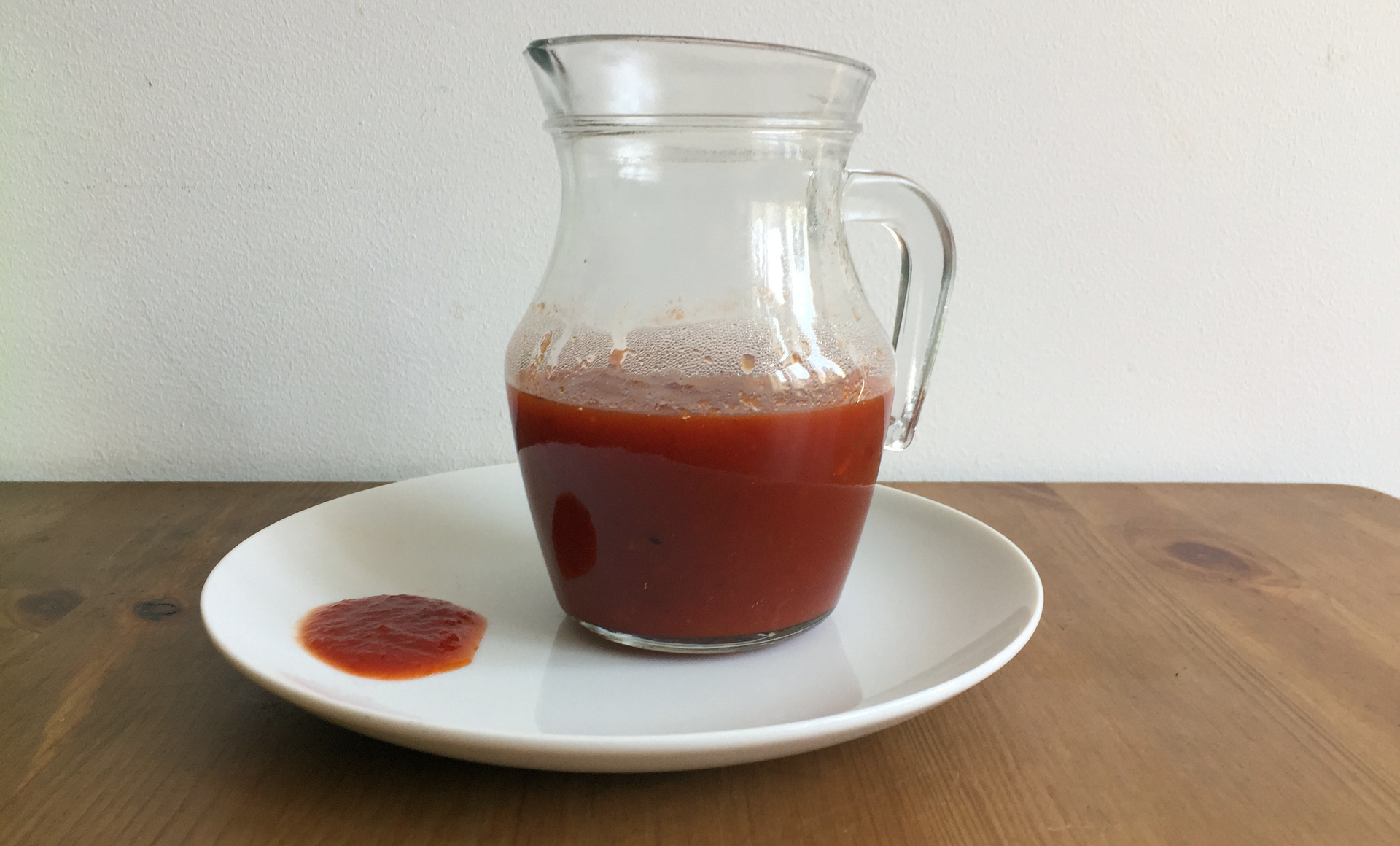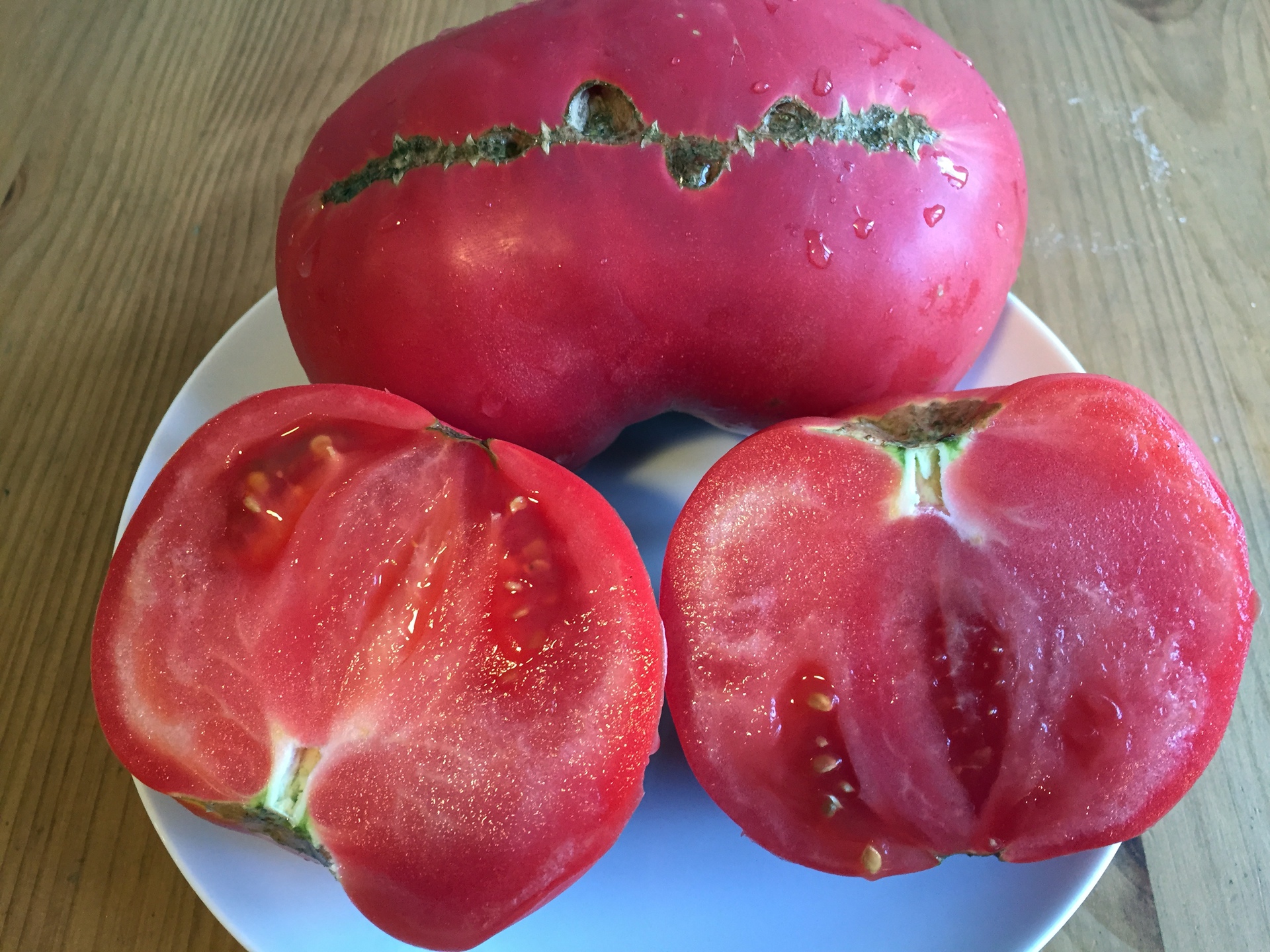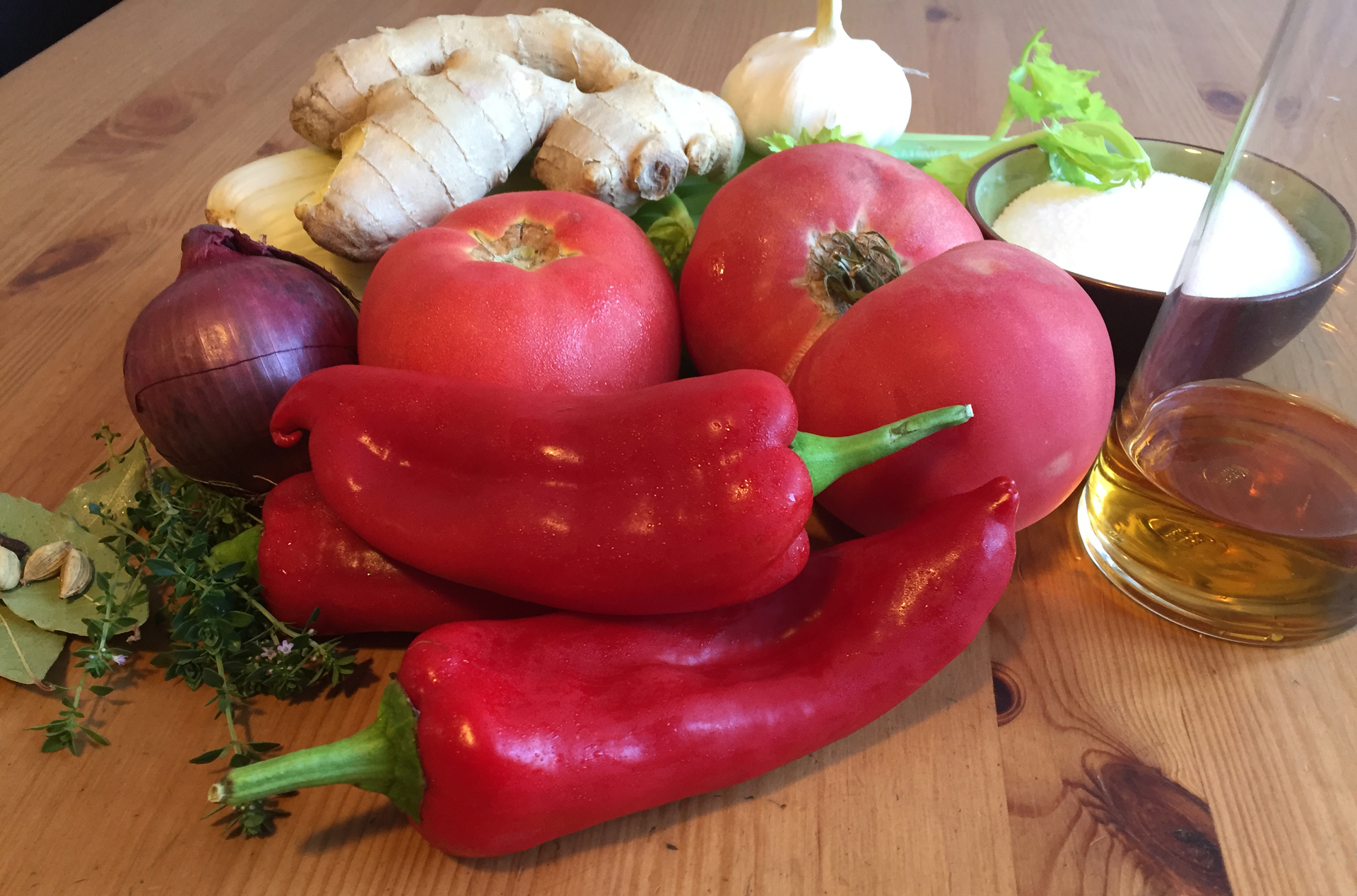Ketchup
Ketchup is one of the industrial products from the supermarket that can be prepared at home with amost zero effort. And you can re-invent home-made ketchup every time you cook it. It invites to experiments with spices and ingredients and is, by the way, a handy method for saving tomatoes that are no longer shiny and flawless, from being thrown away.

You should see the recipe as a base for experiments. Change the vegetables and spices, when you feel like it. The quantities and times given are only intended as a rough guide since they depend completely on the quality of the main ingredient, the tomatoes. I prefer Bulgarian pink tomatoes that contain only little water and have a medium sweetness.

Bulgarian pnk tomatoes are quite large and have solid pulp
Ingredients
- 1 kg Bulgarian pink tomatoes
- 250 g peppers
- 120 g onions
- 1 red hot chili pepper
- 2 cloves of garlic
- 100 g celery
- 30 g ginger
- 3 cloves
- 5 cardamom pods
- 1 cinnamon stick
- 5 twigs lemno thyme
- 100 ml vinagre
- 10 g (1 level tbsp) salt
- 3 bay leaves
- 100 g gelling sugar 1:1

Preparation
Cooks in about 90 minutes, 20 minutes of which are needed for preparation, the rest for cooking only.
- Heat the oven to 250 °C (480 °F).
- Cut the tomatoes and onions in cubes. Cut the celery in thin slices, peel the ginger and chop it. Peel the garlic and crush it with a knife. Cut the chili pepper in rings.
- Crush the cardamom pods with a knife and roast together with the cloves and the cinnamon in a dry pan until it starts smelling.
- Bring all ingredients but the peppers and the sugar to boil and let simmer for 30 minutes.
- Wash the peppers and roast them on a pizza stone or baking tree on all sides until the skin becomes black and shows bubbles. Cool down the peppers and peel them. Remove the seeds, cut the peppers in pieces and mix them in a blender.

- Pass the cooked vegetables through a sieve, add the mixed peppers and the sugar and boil down for at least half an hour at medium heat to the desired consistency. You can add the cinnamon stick again as well while cooking.
- Transfer the ketchup into a sterile preserving bottle, close firmly and cool down upside-down.

Gelling sugar is sugar with a little pectin and citric acid for conserving. Gelling sugar 1:1 contains about 2 percent pectin. There is also a ready-made mixture called "Gelfix 1:1" that you can add to normal sugar, but otherwise just use pectin (about 2 g or half a level tsp for 100 g sugar). There is no need for citric acid. The vinagre is sufficient for conserving.
The indication 1:1 for the gelling sugar means that --- for jam --- you should use 1 kg sugar for 1 kg fruits. There is also gelling sugar 2:1 and 3:1 that require less sugar but it also contains conservants.
You should buy good vinagre. Whether it is made from apples or wine does not matter all that much. You can probably also use Condimento Bianco with success.
If you like, replace the peppers or celery with tomatoes. You can also use celeriac, carrots or egg-plants. And if you don't like hot ketchup, just omit the red chili.
The list of spices leaves a lot of room for experiments. Coriander, star anise, rosemary, or oregano can be cooked with the tomatoes. Cayenne pepper, chili powder and similar spices can also be added to the ketchup after cooking.
By the way: Reduce the amount of sugar a little if you want to use the ketchup warm or hot. It will taste sweeter at higher temperatures and therefore requires less sugar.
Leave a comment
Giving your email address is optional. But please keep in mind that you cannot get a notification about a response without a valid email address. The address will not be displayed with the comment!